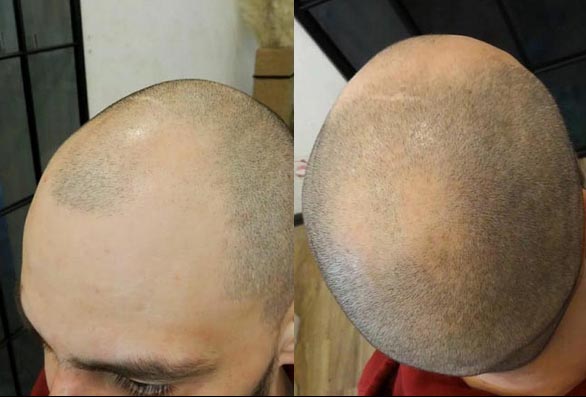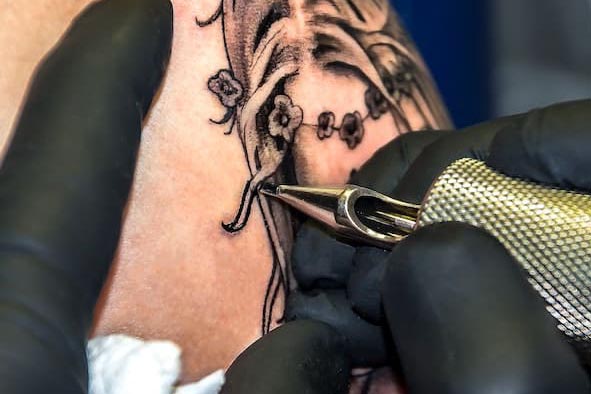Microblading: Everything You Need to Know
Microblading: Everything You Need to Know
Blog Article
Microblading has gained immense popularity as a semi-permanent solution for achieving fuller, well-defined eyebrows. Whether you have sparse brows, suffer from hair loss or simply want to enhance your natural shape, microblading can provide long-lasting, natural-looking results. This guide covers all aspects of microblading, including its benefits, procedure, healing process, risks and maintenance. 
For more details visit:
https://www.tattoosnewdelhi.com/dwarka-tattoo-studio-artist/
https://www.tattoosnewdelhi.com/greater-kailash-gk-1-tattoo-studio-artist/
https://www.tattoosnewdelhi.com/gurgaon-gurugram-tattoo-studio-artist/
What is Microblading?
Microblading is a semi-permanent cosmetic tattooing technique that enhances the appearance of eyebrows by creating hair-like strokes with a manual handheld tool. Unlike traditional tattooing, which uses a machine and penetrates deep into the skin, microblading deposits pigment into the upper layers of the skin, making it fade over time. The result is natural-looking, fuller brows that mimic real hair.

Benefits of Microblading
Microblading offers several benefits, making it a popular choice among those looking for perfectly shaped eyebrows:
- Natural Appearance– The technique creates realistic, hair-like strokes, giving eyebrows a natural look.
- Time-Saving– Eliminates the need for daily eyebrow makeup.
- Long-Lasting Results– Results can last 1-3 years, depending on skin type and aftercare.
- Customizable Shape and Color– The technician tailors the shape and pigment color to match your natural brow and skin tone.
- Waterproof and Smudge-Proof– Unlike makeup, microbladed brows won’t smudge or wash off.
- Ideal for Sparse or Uneven Brows– Great for individuals with thin, patchy or over-plucked eyebrows.
- Boosts Confidence– Enhances facial symmetry and boosts self-esteem.
Who is a Good Candidate for Microblading?
Microblading is suitable for most people; however, it works best for individuals with normal to dry skin. Oily skin types may experience faster fading. You are a good candidate if:
- You have sparse, thin or uneven eyebrows.
- You want a low-maintenance solution for fuller brows.
- You do not have major skin conditions like eczema, psoriasis or severe acne around the brows.
- You are not pregnant or nursing.
- You do not have keloid scarring tendencies.
- You are not on blood thinners or other medications that affect healing.
Microblading Procedure
The microblading procedure typically takes 2-3 hours and consists of the following steps:
- Consultation and Brow Mapping
- The artist discusses your preferences, assesses your natural brows and determines the best shape and color for your face.
- Brow mapping is done using measuring tools to create a symmetrical, flattering shape.
- Numbing Process
- A topical numbing cream is applied to minimize discomfort.
- The cream takes about 20-30 minutes to take effect.
- Microblading Strokes
- The technician uses a sterile, disposable microblading tool to make fine incisions in the skin and deposit pigment.
- Strokes are carefully placed to mimic the natural direction of hair growth.
- Pigment Absorption
- Additional pigment is applied over the brows to enhance color absorption.
- The pigment is left for a few minutes before being wiped off.
- Final Touches
- The artist reviews the shape and makes any necessary adjustments.
- Aftercare instructions are provided to ensure proper healing.
Healing Process & Aftercare
The healing process takes 4-6 weeks and follows distinct stages:
Day 1-2: Fresh and Dark Brows
- Brows appear darker and bolder than expected.
- Minor redness and slight swelling are normal.
Day 3-7: Scabbing and Itching
- Scabs start forming as the skin heals.
- Itching may occur, but scratching should be avoided.
Day 7-14: Peeling and Fading
- Scabs begin to flake off naturally.
- The pigment may appear lighter as the skin heals over it.
Day 14-28: Color Settling
- The true pigment color gradually emerges.
- Brows may still appear patchy until fully healed.
6 Weeks: Touch-Up Session
- A mandatory touch-up is performed to fill any gaps and enhance color.
Aftercare Tips
To ensure proper healing and long-lasting results:
- Keep the area dry for the first 24 hours.
- Avoid touching, rubbing or picking at the scabs.
- Apply the recommended healing balm if prescribed.
- Avoid sweating, swimming or excessive sun exposure for two weeks.
- Do not use exfoliants, retinol or harsh skincare products on the brows.
Risks & Side Effects
While microblading is generally safe, there are potential risks, including:
- Infection– Poor hygiene or improper aftercare can lead to infections.
- Allergic Reactions– Some individuals may be allergic to pigments or numbing agents.
- Uneven Healing– Some strokes may fade faster than others, requiring additional touch-ups.
- Scarring– Improper technique or excessive pressure can cause scarring.
- Pigment Discoloration– Over time, pigments may fade to a different color, like gray or red.
To minimize risks, always choose a certified, experienced artist and follow aftercare instructions carefully.
How Long Does Microblading Last?
Microblading lasts between 12-36 months, depending on:
- Skin Type:Oily skin fades faster than dry skin.
- Lifestyle:Frequent sun exposure and skincare treatments (like chemical peels) accelerate fading.
- Pigment Color:Lighter pigments fade more quickly than darker shades.
- Aftercare:Proper care helps prolong results.
Annual touch-ups are recommended to maintain the shape and color.
Microblading vs. Other Eyebrow Techniques
- Microblading vs. Ombre Powder Brows
- Microblading:Creates natural, hair-like strokes. Best for normal to dry skin.
- Ombre Brows:Uses a shading technique for a soft, powdered look. Better for oily skin.
- Microblading vs. Traditional Tattooing
- Microblading:Semi-permanent, fades over time and looks natural.
- Tattooing:Permanent, may blur over time and requires laser removal.
- Microblading vs. Brow Lamination
- Microblading:Lasts years and alters brow shape.
- Lamination:Lasts 4-8 weeks and lifts existing brow hairs for a fuller look.
Cost of Microblading
The cost of microblading varies depending on location, artist experience and additional touch-ups. On average:
- Basic Microblading:$300 - $800
- Touch-Up Sessions:$100 - $300
- High-End Artists:$800 - $1500
While it may seem expensive, quality microblading ensures better results and safety.
How to Choose the Right Microblading Artist
- Check Credentials– Ensure the artist is licensed and certified.
- Review Portfolio– Look at before-and-after photos of their work.
- Read Reviews– Customer testimonials provide insight into their skills.
- Ask About Hygiene Standards– The studio should follow strict sanitation protocols.
- Schedule a Consultation– Discuss your goals, ask questions and assess their expertise.
Conclusion
Microblading is an excellent solution for achieving natural-looking, fuller brows without daily makeup. While the procedure requires an investment of time and money, the long-lasting results and convenience make it worthwhile. By choosing a skilled artist and following proper aftercare, you can enjoy beautiful, well-defined brows for years to come.
If you're considering microblading, research thoroughly, consult a professional and take the necessary steps to ensure a safe and satisfying experience.
Report this page